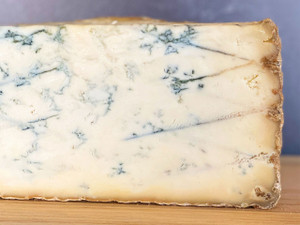Description
This Welsh cheddar's name, Hafod, means "summer pasture" in Welsh. Cheesemaker Rob Howard looked to historical sources for inspiration and created the cheese according to methods described in the classic manual, Practical Cheddar Cheese-Making, written in 1917.
Thanks to those techniques along with Ayrshire cow's milk, the cheese has a complex, earthy flavor that's less acidic than other cheddars. It is a monger favorite.
About the Farm and Dairy
Holden Farm Dairy, the producers of Hafod , is located on Bwlchwernen Fawr Farm, 10 miles from the beautiful Ceredigion coast. The owner, Patrick Holden, has been based at the farm since the early 70s. By the early 2000s, the farm was no longer economically sustainable, so Sam Holden, the son of Patrick and his wife Becky, started making Hafod to add value to their cows’ milk. After the team tweaked the recipe using the 1917 manual Practical Cheddar Cheese-making, the final recipe for Hafod became similar to the Welsh Cheddar made over a century ago.
Bwlchwernen Fawr has been certified organic since 1973, making it the longest-standing registered organic dairy farm in Wales. The Holdens' 80-strong herd of Ayrshire cows' diet is grown on the farm's land, as is the straw for the indoor bedding: for the past four decades, the family has been working toward a system where the farm is wholly self-sustaining.
INGREDIENTS:
More Information
- Country of Origin
- United Kingdom
- Region
- Wales
- Type of Milk
- Cow
- Milk Treatment
- Raw
- Rennet
- Animal
- Allergens
- Milk
- Organic?
- Yes
Caring for Your Cheese
How much cheese should I buy?
We advise buying small quantities more frequently to avoid long term storage because the complex flavors and aromas of good cheese will change and degrade over time. For appetizer quantities and not much left over, we suggest 1/4 lb per person. For larger servings or if you'd like some left overs, we suggest a full 1/2 lb per person.
How should I serve my cheese?
You can serve any number of cheeses: a single magnificent chèvre or a large selection celebrating the diversity of aromas, flavors and textures found in various traditions around the world. Choose what you like and what you expect your audience will enjoy. We usually go for a selection of three to four cheeses with various milk types, textures and flavors.
Take your cheese out of the refrigerator an hour or so before serving. Just before serving, unwrap each cheese and scrape the cut surface with a knife edge to remove a thin layer. If you notice dried out parts or mold on the face of the cheese, cut it away.
Can I eat the rind?
Most cheeses have rinds and most rinds are edible. If you don’t like the taste or texture, cut it off.
What do I do about the mold on my cheese?
Cheese stored for some time may grow exterior molds. Typical molds will be white or blue-green but you can sometimes come across yellow or gray. Most of the time, you can refresh the cheese by cutting away those affected areas. The cheese underneath will be fine.
How do I store my cheese?
Store in a higher humidity area of your refrigerator - likely an enclosed spot which allows for limited airflow rather than constant drafts.
How do I wrap my cheese?
Use a clean wrap of the cheese paper, or, in a pinch use parchment (for softer cheeses) or aluminum foil (for firm to hard cheeses).
Enjoy!
No reviews yet.
Click the button below and be the first to review Hafod (Organic Raw Cow's Milk Cheese)







